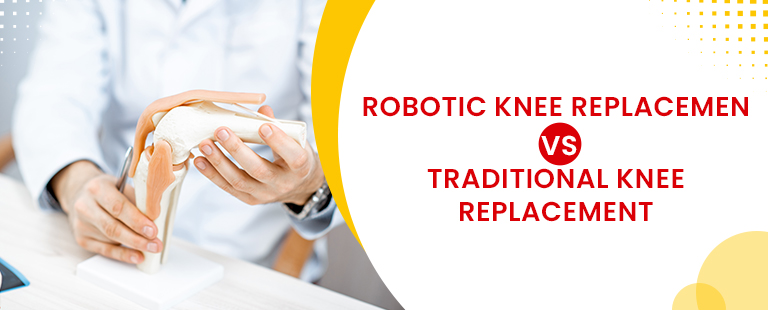Introduction:
These days, there are different types of surgeries to choose from. While it’s good to have options for your health, it can also be a bit confusing. If you need surgery, you might feel a bit overwhelmed with all the choices. Should you go with the usual traditional surgical approach? What about the less invasive option? Is robotic surgery the right one for you?
In the fast-paced world of medical progress, more and more people are discussing robotic-assisted surgeries as a different way to replace joints compared to traditional procedures. Each method has its own set of advantages, and understanding these differences is crucial for patients when deciding on their healthcare.
In this blog post, we’ll take a closer look at robotic surgery and traditional joint replacement, highlighting the unique benefits each offers. Please be aware that the information provided is based on research, and we strongly emphasize the importance of consulting with your healthcare professionals.
The Growth of Robotic Surgery:
Robotic surgery is becoming increasingly common as a modern technology that enhances precision and control during procedures. In the realm of joint replacement, surgeons are turning to robots to assist in performing intricate tasks with exceptional accuracy. One key advantage of robotic surgery lies in its ability to create a three-dimensional map of the patient’s anatomy, aiding in meticulous planning and execution of the surgery.
Advantages of Robotic Surgery:
- Precision and Accuracy: Robotic systems provide unmatched precision, allowing surgeons to make smaller incisions and navigate complex joint structures with accuracy. This precision can lead to better alignment and placement of implants, ultimately improving long-term outcomes for patients.
- Customized Planning: Robotic surgery allows for personalized preoperative planning based on the patient’s unique anatomy. The three-dimensional mapping assists surgeons in creating a tailored surgical plan, enhancing the overall success of the joint replacement procedure.
- Minimally Invasive Approach: Robotic-assisted surgeries often involve smaller incisions compared to traditional joint replacement procedures. This minimally invasive approach can result in reduced pain, quicker recovery times, and a decreased risk of complications for patients.
- Real-time Feedback: Robotic systems offer real-time feedback to surgeons, alerting them to potential deviations from the planned procedure. This feature allows for immediate adjustments, ensuring optimal outcomes and minimizing the likelihood of errors.
Traditional Joint Replacement:
While robotic surgery is on the rise, traditional joint replacement procedures have been the standard for decades, delivering reliable results. These procedures involve skilled surgeons using manual techniques to replace damaged joints with prosthetics, such as hip or knee implants.
Advantages of Traditional Joint Replacement:
- Proven Track Record: Traditional joint replacement procedures have a long and successful history. Surgeons are well-versed in these techniques, and extensive research supports the efficacy and durability of the implants used in conventional surgeries.
- Surgeon Experience: Skilled surgeons have extensive experience in performing traditional joint replacements. Their expertise, developed over years of practice, ensures a high level of proficiency in navigating various complexities encountered during surgery.
- Cost-Effective: Traditional joint replacement procedures are often more cost-effective than their robotic counterparts. This can be a crucial factor for patients considering the financial aspects of their healthcare.
- Accessible to More Patients: While robotic surgery is becoming more prevalent, it may not be universally available or accessible to all patients. Traditional joint replacement procedures remain a reliable option for a broader population.
Conclusion:
Both traditional and robotic surgeries come with their own set of pros and cons. Robotic surgery offers precision and personalized planning, with potential benefits in terms of recovery and outcomes. Conversely, traditional joint replacement procedures have a proven track record, surgeon expertise, cost-effectiveness, and broader accessibility.
Ultimately, the choice between these two methods depends on various factors such as the patient’s health condition, the severity of the condition, personal preferences, and the surgical team’s expertise. Both approaches play crucial roles in modern healthcare. Therefore, it’s advisable to consult with the surgeon, consider personal preferences, and thoroughly understand the options before deciding on the surgical approach.



